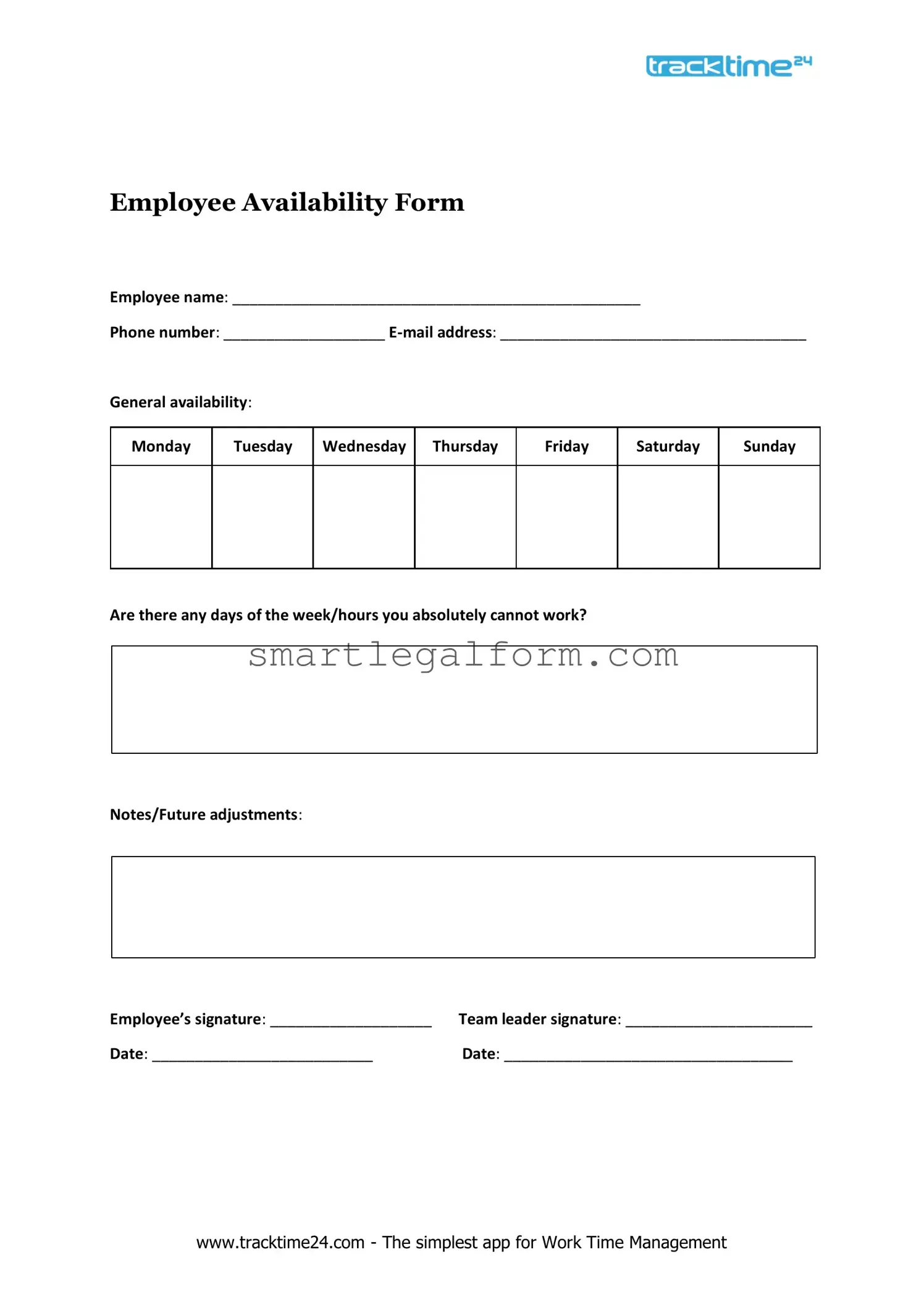Filling out the Employee Availability form can seem straightforward, yet many individuals make common mistakes that can lead to scheduling conflicts or misunderstandings. One frequent error is failing to provide complete information. Omitting essential details such as specific days or hours can create confusion for managers trying to create a work schedule.
Another common mistake is not updating the form regularly. Life changes, such as new commitments or shifts in availability, should be reflected promptly. If employees neglect to revise their availability, they risk being scheduled for shifts they cannot work, which can lead to frustration for both themselves and their employers.
Many individuals also misinterpret the instructions provided with the form. It is crucial to read the guidelines carefully to ensure that the information is filled out correctly. Misunderstandings can result in errors that affect the entire team’s scheduling process.
Some employees fail to indicate preferred shifts or hours. While it may seem unnecessary, communicating preferences can help managers create schedules that accommodate employees' needs. Without this information, managers may inadvertently schedule employees at inconvenient times.
Another mistake is neglecting to communicate any restrictions or limitations. If an employee has specific days they cannot work due to personal obligations, this should be clearly stated on the form. This transparency helps prevent scheduling issues down the line.
Additionally, individuals sometimes forget to sign or date the form. A missing signature can render the document invalid, leading to potential misunderstandings about an employee's availability. Always double-check for this important step.
Some employees may also rush through the process, leading to careless errors. Taking the time to fill out the form thoughtfully can make a significant difference in scheduling accuracy. It is advisable to review the completed form before submission.
Another frequent oversight is not discussing availability with family or other commitments beforehand. Employees should consider their obligations outside of work to ensure they provide realistic availability. This foresight can prevent conflicts and ensure a smoother scheduling process.
Lastly, individuals sometimes fail to follow up after submitting the form. Checking in with a supervisor or manager can clarify any uncertainties and confirm that the information has been received and understood. Open communication is essential in maintaining a harmonious work environment.

